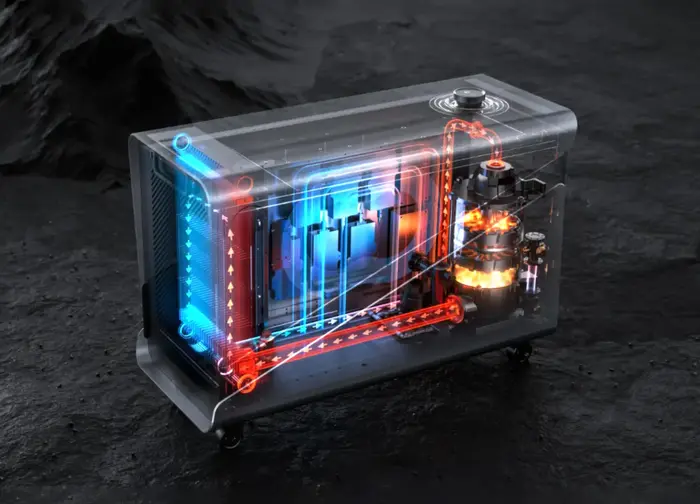Introduction
Self-Cooling Welding Machines are revolutionizing the welding industry by offering a compact, efficient, and highly reliable solution for heavy-duty and continuous welding tasks. These machines are equipped with internal cooling systems that eliminate the need for external water chillers or fans, making them ideal for space-constrained or mobile work environments.
With the growing demand for automation, reduced downtime, and energy-efficient tools, self-cooling welding machines are quickly becoming a preferred choice across industries such as steel fabrication, construction, automotive, shipbuilding, and field repair services. Their ability to operate longer, maintain consistent performance, and reduce maintenance requirements makes them a powerful asset for productivity and performance.
Benefits of Self-Cooling Welding Machines
Built-In Cooling Mechanism
These machines typically feature:
- High-speed internal fans
- Copper/aluminum heat sinks
- In some high-end versions, miniature liquid coolant channels or thermoelectric coolers (Peltier units).
This integrated system ensures heat generated during welding is dissipated instantly, keeping the core temperature within safe operating limits.
Supports Long-Duration Welding
Overheating is a common limitation with regular welders, especially during continuous welding tasks. A self-cooling unit maintains consistent thermal balance, allowing for:
- Longer duty cycles
- Fewer cool-down breaks
- Higher productivity in assembly lines and fabrication shops.
Compact & Portable Design
Because external cooling systems are not required, these machines are smaller in size, lighter in weight, and much easier to move. Ideal for:
- Remote field operations
- Mobile welding vans
- Space-restricted workshops
Lower Maintenance Demands
Self-contained systems have:
- No external hoses or reservoirs to inspect
- No risk of coolant leakage
- Self-cleaning filters in some advanced models
This translates to reduced machine downtime, fewer maintenance routines, and lower operating costs.
Energy Efficiency
Smart sensors within the system can detect real-time heat levels and activate cooling only when necessary. This makes these units:
- More energy-conscious
- Less prone to unnecessary fan wear
- Quieter, as they avoid constant noise from always-on coolers
Improved Machine Durability
Thermal cycling (constant heating and cooling) weakens electronic components. Self-cooling mechanisms:
- Maintain stable internal temperatures
- Prevent thermal stress on circuit boards and internal wirings
- Significantly extend the life of the welding unit
No External Dependencies
This is especially beneficial in:
- Remote areas with limited access to cooling infrastructure
- Mobile setups where mobility and independence from auxiliary systems are crucial
Applications Across Industries
Self-cooling welders are versatile and highly valuable in:
- Steel fabrication units
- Heavy equipment maintenance
- Shipbuilding and marine applications
- Oil & gas pipeline welding
- Railway and transport industries
- Construction and structural engineering
- Automotive repair garages
Future of Welding – Smarter, Compact, and Self-Reliant
With increasing demand for automation, minimal downtime, and reduced operational complexity, self-cooling welding machines are setting new standards. They bring:
- Convenience
- Compactness
- Cost-effectiveness to professional and industrial welding environments.
These machines are not just a tool—but a step forward in smart manufacturing.
Conclusion
Self-Cooling Welding Machines offer a powerful combination of in-built thermal regulation, extended duty cycles, compact design, and low maintenance needs. These smart machines help industries overcome the limitations of traditional welders by enabling seamless and continuous welding, even in the most demanding conditions.
As the need for portable, energy-efficient, and durable welding systems continues to rise, investing in self-cooling welding machines ensures greater efficiency, enhanced lifespan, and reduced operating costs. Whether you’re modernizing your fabrication line or setting up for fieldwork, these machines are a forward-thinking solution for the future of welding.

